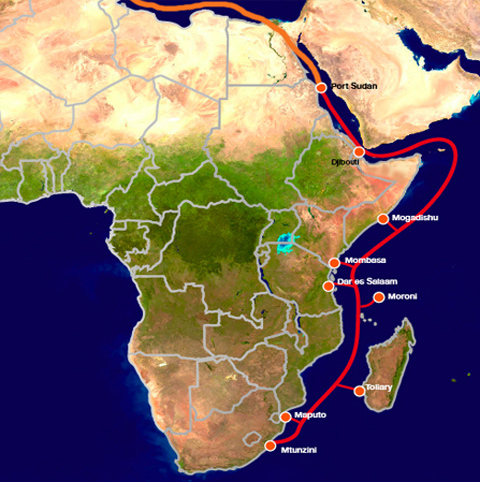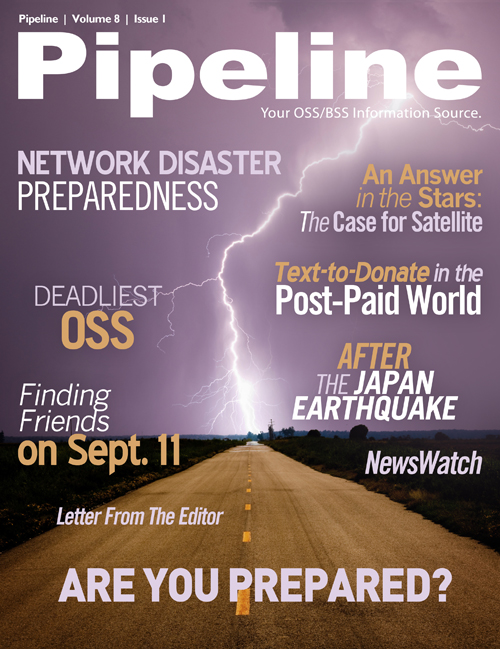Rolling Ships
Subsea providers generally contract with third parties for specialized ships that are equipped for deep sea cable repair, but there are very few of them operating around the world. "If we have a cable cut, we mobilize the closest ship," explains Sher. "The ship has to find the cable, pull it up from the seabed with a hook or an ROV (a miniature, remote-control submarine)," Sher says. Sometimes cables can be trapped under debris, so ROV s are used to cut the cable and pull each side to the surface ship. Cables are then spliced and repaired right on a heaving deck. "It takes a huge amount of time to mobilize a ship and sail," Sher says. "The furthest point can be 10 days of sailing" just to reach the location of the cable cut.
In the case of severe seismic events, more than one ship may be needed to repair multiple cuts, or multiple cable outages. "Sometimes we need more [ships] than are available in a particular region," says Pfaff; in such cases, "ships are sent from another region." There's no way to plan or prepare for such scenarios because it is impossible to predict when, where or how they'll happen. "If told you two events are similar, I'd be lying; there are many scenarios that can occur," says Pfaff. He explains that subsea operators rely heavily on a relatively small group of experts to respond to scenarios as they arise and create response plans essentially on the fly. Regardless of the specifics, the plan will involve the typical OSS function of identifying where a cable is cut and following up with repair dispatch; in this case, that involves sending a ship, or ships, to the location as rapidly as possible.

Source: WIOCC
When thinking about operations support systems (OSS) we typically think of software systems that live somewhere in a data center, or perhaps in the cloud. Global Marine's CS Sovereign is an OSS of a different sort. Global Marine is one of the major subsea cable repair ship operators and is the parent company for Huawei Marine. The company operates eight ships that are capable of various roles ranging from laying to repairing subsea cable.
The CS Sovereign is its multi-role ship which operates in the Atlantic Ocean. It is a Dutch-built DPS-2 vessel based in Portland, UK on the southern coast of England. It is over 130 meters in length —roughly the size of a World World II heavy cruiser— and is fitted with an ice-breaking hull. It carries a 35 ton A-frame, a superstructure specific to cable repair work; three 5-ton cranes and two 2-ton cranes; an Atlas 1 trenching ROV that can bury cable up to 2 meters deep in the seabed; more than 1,100 tons of marine gas oil for power; and enough berths for 76 crew members, plus a two berth hospital.
Consider that a major cruise ship will cost anywhere from $300 million to more than $1 billion dollars to build, and it's easy to see how subsea cable operation and maintenance is extremely capital intensive. It is not dissimilar to undersea oil exploration and drilling. In fact, most of the companies that support subsea communications cable also support oil and gas rigs as well as ocean-based wind farms.
Subsea operations comprise one of the hard, fixed costs in communications' increasing globalization. There's no way around the fact that more than 70 percent of the Earth's surface is covered in water. In lieu of new technology emerging that does not yet exist which either makes trans-oceanic wireless a possibility, or completely changes the economics and feasibility of high capacity satellite connectivity, global interconnectivity, and the Internet itself, will continue rely on subsea cables and the small number of people, companies, and ships that are equipped to manage them.








